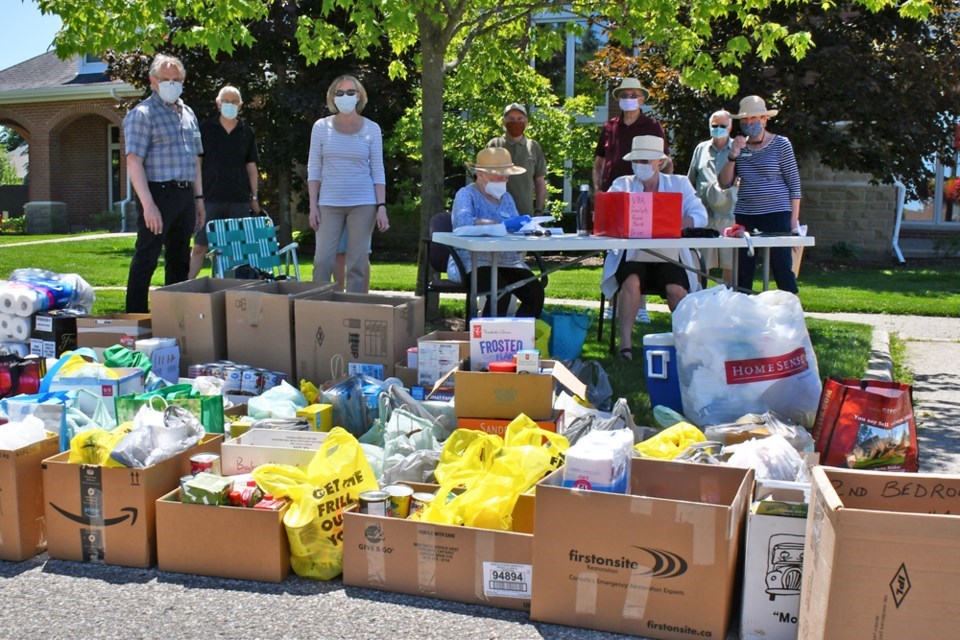What the Guelph Food Bank (GFB) initially began as a six-month pilot project has grown to become a full-time Community Food Hub to increase food accessibility for neighbourhoods in need.
In early 2022, GFB tested the pilot project to help bring food support directly to communities in an effort to avoid residents having to travel long distances to access one location.
The pilot project began with three participating neighbourhood groups – Grange Hill East Neighbourhood Group, Two Rivers Neighbourhood Group and West Willow Village.
Since then the need has grown, and so has the hub, with two additional locations including Brant Avenue Neighbourhood Group and Parkwood Gardens Neighbourhood Group.
“The first three locations were successful. We assumed that the numbers that we were servicing directly would decline with these three groups. But the opposite happened,” said GFB administrator Pauline Cripps.
“Throughout the pandemic, we saw unprecedented levels of need within our organization with rates of increase that we had never seen before. Our numbers increased in our direct service line here at the food bank, while also simultaneously increasing at all of the satellite locations.”
The Guelph Food Bank also has a sixth location in the works, a hybrid partnership with Anishnabeg Outreach, an organization based in Waterloo.
For Cripps, the Community Food Hub is about reducing barriers to service for people who don't have reliable access to transportation when trying to access the food bank.
“Prior to this, we were seeing people from the Brant (Street) area walk over two hours to access us, just to get here,” Cripps said, referring the GFB's Crimea Street location.
As a result, Cripps says, many clients were trying to access groups closer to their neighbourhoods, but this would often lead to fewer supports.
“Many of the smaller groups don’t have the capacity and the tools to bring in enough food to support their entire neighbourhoods,” Cripps said.
“By moving to this model, we hope to see more reliable and regular and streamlined support available through neighbourhood groups.”
Through the hub, the food bank shares its inventory with all satellite locations.
“We try to operate as one community food hub and our eventual goal is to focus on the distribution piece,” Cripps said.
“We have the space, the capacity, the resources and the infrastructure already set up here to be able to support different groups and the food programs around the community."
The goal for the Community Food Hub is to make sure people who need support are able to access everything they need in one group.
“We want to work with these groups in their neighbourhood because they know their neighbourhood and the needs of their neighbours better than we do, and on a more personal level. And the food bank will commit to taking on the procurement and distribution so they do not have to worry about that,” Cripps said.
“We will take on that continuous and sustainable supply to try to take that scarcity away from a group that would otherwise be trying to access services.”
But as food banks continue to face the challenge of an inconsistent flow of donations and with inflationary food costs, GFB continues to see a decrease in donations.
“Donations are very much needed as we have seen a significant decline this year with everything going on,” Cripps said.
“It’s a decline that we haven’t seen before and our output is on an exponential incline.”
Cripps says the focus is on procurement as the food bank works on hosting additional food drives and on messaging to put out to the community.
“We currently see a growing need for non-perishable food items That’s what we’ve been going through more quickly, especially key items like canned vegetables, fruit and soup as well as baby items including diapers, which are always in high need,” Cripps said.
Cripps says GFB will handle the logistics, the procurement and the distribution of food support to the community and the community groups coming on board.
“That’s our goal, especially in the south end right now where we are trying to find a partner to work with, whether it's an organization or church,” Cripps said.
“We are actively seeking partnerships with other groups to work with so that we can support some of these areas that are really under serviced.”
For more information or to donate to the Guelph Food Bank, visit here.



.png;w=120;h=80;mode=crop)